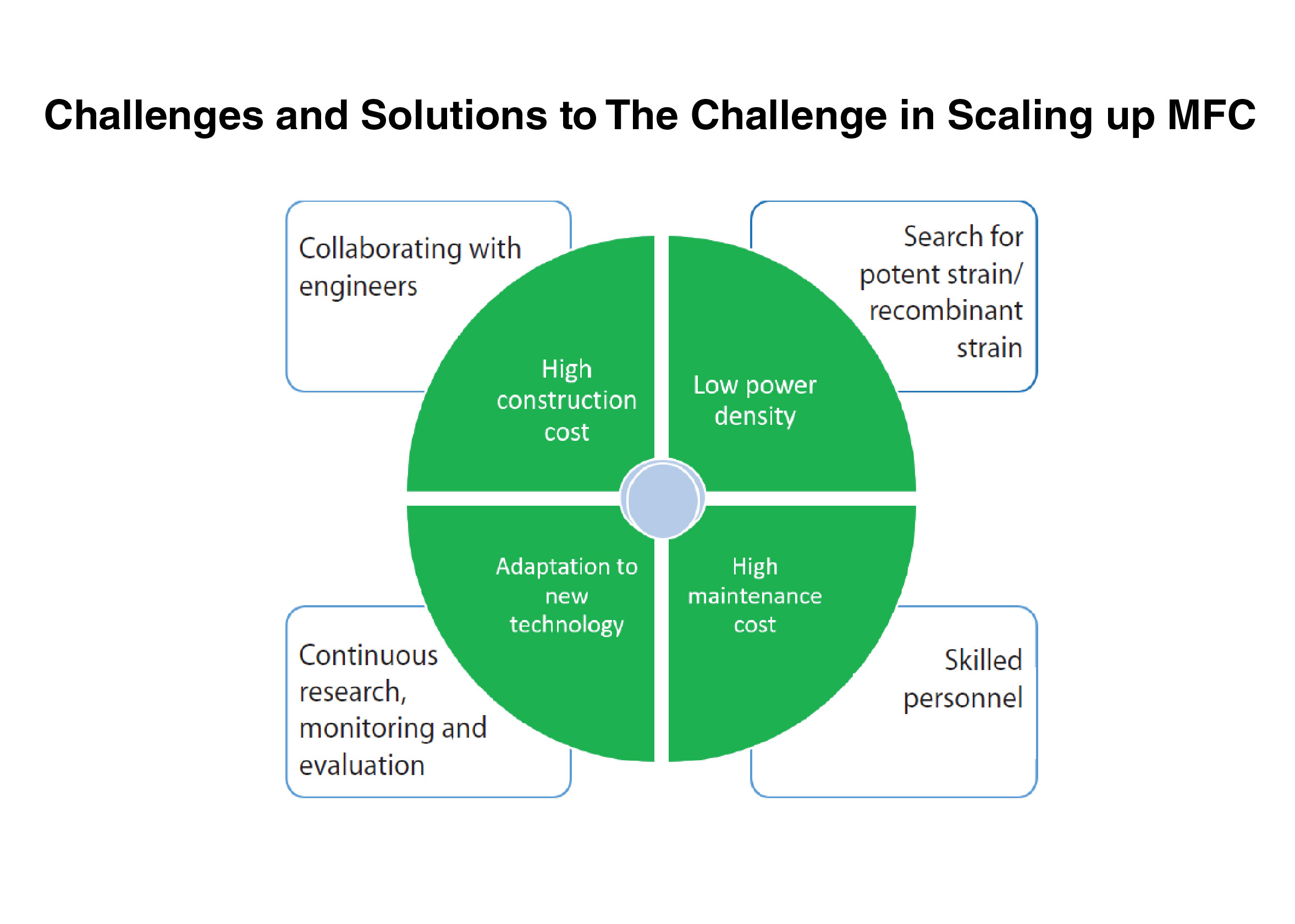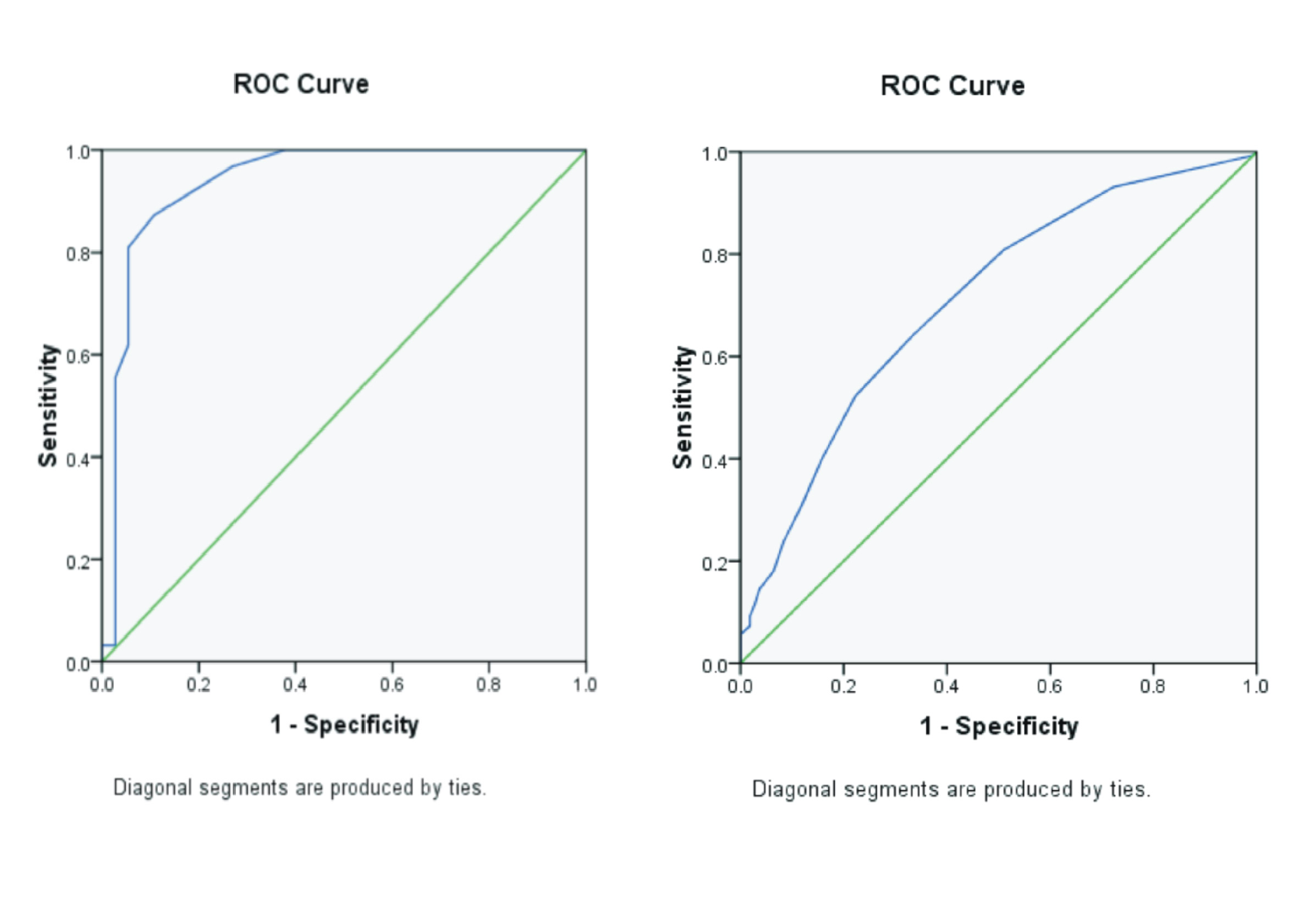LABORATORY WASTEWATER TREATMENT USING MICROBIAL FUEL CELL: A FUTURE PARADIGM OF SUSTAINABILITY

Background: In Southwestern Bangladesh, the absence of safe drinking water is a severe catastrophe. Coastal inhabitants were pressured to drink saline water and were not able to fetch conveyable drinking water. The Incremental Lifetime Cancer Risk value for Cr, Ni, Cd of mine area of Dinajpur, Hazaribagh tannery, Singair, Manikgonj, Rajshahi city and Chuadanga is found from 18.2 × 10−3 to 1.32 × 10−3 where more than 1 × 10–4 is considered significant. At present the global burden of excreta-related syndrome is enormously high. Therefore, laboratory wastewater treatment is an urgent need. Purpose: A microbial fuel cell can be considered a sustainable tool to mitigate this problem. The findings of this study will help the reader to know that biotechnology in the laboratory is a self-sustaining wastewater treatment method. Future direction is also anticipated. Moreover, people will be able to understand the wise use of water. Review: It was a descriptive type of qualitative study with a literature review. The literature research was performed electronically through Springer, PubMed, Google Scholar and distinctive databases. The literature published between 2013 - 2024 was searched to identify the relevant literature using the keywords: “Microbial fuel cells,” “sustainability,” “wastewater,” “saline water,” and “Bangladesh.” Result: This study explored different studies related to the existing mechanism of MFC in wastewater treatment. The paper highlighted remarkable research from 2016 to 2024 as well as challenges and solutions to these challenges in scaling up MFC. Conclusion: The author strongly recommends that laboratory wastewater treatment by microbial fuel cells is a paradigm of sustainability for its capability of low sludge production results in a reduction of secondary pollution and low carbon footprint arising from less fossil-related CO2 production as a result of low energy consumption. A lot more work is essential in the field to produce a sustainable energy source in countries like Bangladesh.
Introduction
Laboratory wastewater is the outcome of chemical remnants utilized at the time of research. Despite its small quantity, it poses a genuine effect on the environment. The wastewater of a laboratory is composed of iron (Fe), zinc (Zn), copper (Cu), chromium (Cr), lead (Pb), etc. These heavy metals are threatening both the sustainable environment and humans. Cancer risk for Pb, Cd, Ni, and Cr consumption over ingesting groundwater is found to exist in numerous places (Parvin et al., 2022(Parvin et al., 2022)).
Laboratory wastewater not only contains heavy metals, antibiotics, and a high pH but also increases chemical oxygen demand, biological oxygen demand, total suspended solid, and total dissolved solid (Agustina et al., 2022(Agustina et al., 2022)). The rest of the diverse antibiotics such as ciprofloxacin, clarithromycin, amoxicillin, clindamycin, lincomycin, linezolid, metronidazole, moxifloxacin, nalidixic acid, and sulfa pyridine were present in the surface waters of Matlab of Chandpur and Dhaka City. Among these, ciprofloxacin (1407 ng/L) and clarithromycin (909 ng/L) were identified in maximum concentration in the water (Angeles et al., 2020(Angeles et al., 2020)).
Frequently used antibiotics in microbiology laboratories like ciprofloxacin, vancomycin, nalidixic acid, and kanamycin are considered high-risk waste (Parvin et al., 2022(Parvin et al., 2022)) nd thus cannot be inactivated through physical treatment methods. Unlimited expenditure of antibiotics for prophylactic determinations raises the risk of increasing antimicrobial resistance in the marine environment (Chowdhury et al., 2022(Chowdhury et al., 2022)). Wastewater, like reservoirs, provides an optimum environment for antimicrobial resistance genes to exist. At present the global burden of excreta-related syndrome is enormously high. So, laboratory wastewater treatment is an urgent need (Mara, 2013(Mara, 2013); Samal et al., 2022(Samal et al., 2022)). High manufacturing costs, significant investment in maintenance, specialized personnel, lab personnel adaptation to the technology, space constraints, installation difficulties, maintaining them in a spreadsheet database, and maintaining living organisms while lack of optimum condition leads to bacterial death are challenging for developing countries with limited financial resources.
The rapidly increasing population and industrial expansion have been raising global water demand by 1% each year also the published report to face a decline in water insufficiency by 2050 is alarming (Shekhawat et al., 2023(Shekhawat et al., 2023)). Coastal inhabitants were pressured to drink saline water and were not able to fetch conveyable drinking water because of the scarcity of accessible, secured water sources in Bangladesh. Approximately 80% of infections in developing countries are accredited to unsafe drinking water and waterborne illnesses. In Southwestern Bangladesh, absence of safe drinking water is a severe catastrophe (Abedin et al., 2019(Abedin et al., 2019)). Owing to seawater interruption, appropriate drinking water is insufficient in southwest coastal Bangladesh. Parvin et al. (2022)(Parvin et al., 2022)calculatedHazard Quotient(HQ) andIncremental Lifetime Cancer Risk(ILCR) for consumption of heavy metal through drinking the groundwater of different regions of Bangladesh. The HQ for Cr (1.14) and Pb (12.23) in the groundwater of Manikgonj and Rajshahi City indicating significant, where HQ > 1 means adverse non-carcinogenic health risk. The ILCR value for Cr, Ni, Cd of mine area of Dinajpur, Hazaribagh tannery, Singair, Manikgonj, Rajshahi City and Chuadanga is found from 18.2 × 10−3to 1.32 × 10−3. ILCR >1 × 10–4is considered significant. The concentration of Pb and Cr in Buriganga River was respectively 0.119 mg/L and 0.119 mg/L. Bangshi River contained 0.108 mg/L Pb. The concentration of Cr (VI) is greater in Balu River (1.02 mg/L) compared to the permissible level 0.1 mg/L. The iron (Fe) concentrations were 2 – 9 mg/L in Teesta river basin and coal mine area of Dinajpur, which indicates that it is higher. Pb poisoning may cause anemia, weakness, kidney and brain damage. Cd and Cr (VI) are extremely toxic and carcinogenic. Excess uptake of Fe and Mn through water results in Parkinson disease, diabetes mellitus, cardiovascular disease, kidney, liver, and neurological disorders (Parvin et al., 2022(Parvin et al., 2022)). So, wastewater discharge requires immediate attention.
Microorganisms are capable of surviving extreme conditions by digesting complex contaminants which is prospective for environmental pollution bioremediation. Municipal solid waste rejected fractions of bacterial conglomerates have enough symbiotic structure as directed by electrons released in corresponding with substrate decomposition (Kamel et al., 2020(Kamel et al., 2020)).A microbiological fuel cell can be considered as a sustainable tool to mitigate this problem (Srimongkol et al., 2022(Srimongkol et al., 2022); Thapa et al., 2022(Thapa et al., 2022)).Microbial Fuel Cell(MFC) is an environmentally friendly technology (Cao et al., 2019(Cao et al., 2019)). MFC has been evidenced before pharmaceutical and hospital wastewater treatment (Thapa et al., 2022(Thapa et al., 2022)). The findings of this study will help the reader to know that biotechnology in the laboratory is a self-sustaining wastewater treatment method (Leicester et al., 2023(Leicester et al., 2023); Malik et al., 2023)(Malik et al., 2023). The building and investigation of MFCs necessitates knowledge ranging from microbiology, and electrochemistry to materials and environmental engineering (Parkash, 2016(Parkash, 2016)). Moreover, people will be able to understand the wise use of water.
Literature Study
Search strategy
This was a descriptive type of qualitative study with a literature review. The literature research was performed electronically through Springer, PubMed, Google Scholar and distinctive databases.
Abedin, Md.A., Collins, A.E., Habiba, U., Shaw, R., 2019. Climate Change, Water Scarcity, and Health Adaptation in Southwestern Coastal Bangladesh. International Journal of Disaster Risk Science Vol. 10(1), Pp. 28-42.
Agustina, T.E., Rachman, S., Ilmi, N., Pranajaya, V., Gayatri, R., 2022. Treatment of Laboratory Wastewater by Using Fenton Reagent and Combination of Coagulation-Adsorption as Pretreatment. Journal of Ecological Engineering Vol. 23(8), Pp. 211-221.
Angeles, L.F., Islam, S., Aldstadt, J., Saqeeb, K.N., Alam, M., Khan, M.A., Johura, F.-T., Ahmed, S.I., Aga, D.S., 2020. Retrospective Suspect Screening Reveals Previously Ignored Antibiotics, Antifungal Compounds, and Metabolites in Bangladesh Surface Waters. The Science of the Total Environment Vol. 712, Pp. 136285.
Arbianti, R., Utami, T.S., Leondo, V., Elisabeth, Putri, S.A., Hermansyah, H., 2018. Effect of Biofilm and Selective Mixed Culture on Microbial Fuel Cell for The Treatment of Tempeh Industrial Wastewater. IOP Conference Series: Materials Science and Engineering Vol. 316(1), Pp. 012073.
Cao, Y., Mu, H., Liu, W., Zhang, R., Guo, J., Xian, M., Liu, H., 2019. Electricigens in The Anode of Microbial Fuel Cells: Pure Cultures Versus Mixed Communities. Microbial Cell Factories Vol. 18(1), Pp. 39.
Chaturvedi, V., Verma, P., 2016. Microbial Fuel Cell: A Green Approach for The Utilization of Waste for The Generation of Bioelectricity. Bioresources and Bioprocessing Vol. 3(1), Pp. 38.
Chowdhury, S., Rheman, S., Debnath, N., Delamare-Deboutteville, J., Akhtar, Z., Ghosh, S., Parveen, S., Islam, K., Islam, Md.A., Rashid, Md.M., Khan, Z.H., Rahman, M., Chadag, V.M., Chowdhury, F., 2022. Antibiotics usage Practices in Aquaculture in Bangladesh and Their Associated Factors. One Health Vol. 15, Pp. 100445.
Dhote, J., Chavhan, Dr.A., Sangita, I., 2014. Design of Laboratory Based Waste Water Treatment Plant. International Research Journal of Science and Engineering Vol. 2(3), Pp. 104-111.
Guo, Y., Wang, J., Shinde, S., Wang, X., Li, Y., Dai, Y., Ren, J., Zhang, P., Liu, X., 2020. Simultaneous Wastewater Treatment and Energy Harvesting in Microbial Fuel Cells: An Update on The Biocatalysts. RSC Advances Vol. 10(43), Pp. 25874-25887.
Kamel, M.S., Abd-Alla, M.H., Abdul-Raouf, U.M., 2020. Characterization of Anodic Biofilm Bacterial Communities and Performance Evaluation of A Mediator-Free Microbial Fuel Cell. Environmental Engineering Research Vol. 25(6), Pp. 862-870.
Leicester, D.D., Settle, S., McCann, C.M., Heidrich, E.S., 2023. Investigating Variability in Microbial Fuel Cells. Applied and Environmental Microbiology Vol. 89(3), Pp. e02181-22.
Malik, S., Kishore, S., Dhasmana, A., Kumari, P., Mitra, T., Chaudhary, V., Kumari, R., Bora, J., Ranjan, A., Minkina, T., Rajput, V.D., 2023. A Perspective Review on Microbial Fuel Cells in Treatment and Product Recovery from Wastewater. Water Vol. 15(2),Pp. 316.
Mara, D., 2013. Domestic Wastewater Treatment in Developing Countries. Routledge, London.
Nawaz, A., ul Haq, I., Qaisar, K., Gunes, B., Raja, S.I., Mohyuddin, K., Amin, H., 2022. Microbial Fuel Cells: Insight into Simultaneous Wastewater Treatment and Bioelectricity Generation. Process Safety and Environmental Protection Vol. 161, Pp. 357-373.
Pant, D., Van Bogaert, G., Diels, L., Vanbroekhoven, K., 2010. A Review of The Substrates used in Microbial Fuel Cells (MFCs) for Sustainable Energy Production. Bioresource Technology Vol. 101(6), Pp. 1533-1543.
Parkash, A., 2016. Microbial Fuel Cells: A Source of Bioenergy. Journal of Microbial & Biochemical Technology Vol. 8(3), Pp. 247-255.
Parvin, F., Haque, M.M., Tareq, S.M., 2022. Recent Status of Water Quality in Bangladesh: A Systematic Review, Meta-Analysis and Health Risk Assessment. Environmental Challenges Vol. 6, Pp. 100416.
Saha, T., Protity, A., Zohora, F., Shaha, M., Ahmed, I., Barua, E., Sarker, P.K., Mukharjee, S., Barua, A., Salimullah, M., Hashem, A., 2019. Microbial Fuel Cell (MFC) Application for Generation of Electricity from Dumping Rubbish and Identification of Potential Electrogenic Bacteria Adv Ind Bio- technol 2: 010. Advances in Industrial Biotechnology Vol. 2(1).
Samal, K., Mahapatra, S., Hibzur Ali, M., 2022. Pharmaceutical Wastewater as Emerging Contaminants (EC): Treatment Technologies, Impact on Environment and Human Health. Energy Nexus Vol. 6, Pp. 100076.
Shekhawat, S.S., Saini, P., Upadhyay, A., Pareek, N., Arora, S., Gupta, A.B., Vivekanand, V., 2023. Treatment of Clinical Laboratory Sewage using A Decentralized Treatment Unit and Risk Reduction for Its Reuse in Irrigation using Hybrid Disinfection. Journal of Environmental Management Vol. 144, Pp.118684.
Sonar, I., Agrawal, K., Mangudkar, R., Damodare, H.,Sshaikh, Salman, Ahire, T., 2021. Application of Microbial Fuel Cell (MFC) in Wastewater Treatment. College of Engineering, Pune (An Autonomous Institute of Government of Maharashtra), India.
Srimongkol, P., Sangtanoo, P., Songserm, P., Watsuntorn, W., Karnchanatat, A., 2022. Micoalgae-Based Wastewater Treatment for Developing Economic and Environmental Sustainability: Current Status and Future Prospects. Frontiers in Bioengineering and Biotechnology Vol. 10, Pp. 904046.
Thapa, B.S., Pandit, S., Patwardhan, S.B., Tripathi, S., Mathuriya, A.S., Gupta, P.K., Lal, R.B., Tusher, T.R., 2022. Application of Microbial Fuel Cell (MFC) for Pharmaceutical Wastewater Treatment: An Overview and Future Perspectives. Sustainability Vol. 14(14), Pp. 8379.
Varnava, C.K., Persianis, P., Ieropoulos, I., Tsipa, A., 2024. Electricity Generation and Real Oily Wastewater Treatment by Pseudomonas Citronellolis 620C in A Microbial Fuel Cell: Pyocyanin Production as Electron Shuttle. Bioprocess and Biosystems Engineering Vol. 47(6), Pp. 903-917.
Xu, W., Zou, R., Jin, B., Zhang, G., Su, Y., Zhang, Y., 2022. The Ins and Outs of Pharmaceutical Wastewater Treatment by Microbial Electrochemical Technologies. Sustainable Horizons Vol. 1, Pp. 100003.
Copyright (c) 2025 Journal of Vocational Health Studies

This work is licensed under a Creative Commons Attribution-NonCommercial-ShareAlike 4.0 International License.
- The authors agree to transfer the transfer copyright of the article to the Journal of Vocational Health Studies (JVHS) effective if and when the paper is accepted for publication.
- Legal formal aspect of journal publication accessibility refers to Creative Commons Attribution-NonCommercial-ShareAlike (CC BY-NC-SA), implies that publication can be used for non-commercial purposes in its original form.
- Every publications (printed/electronic) are open access for educational purposes, research, and library. Other that the aims mentioned above, editorial board is not responsible for copyright violation.
Journal of Vocational Health Studies is licensed under a Creative Commons Attribution-NonCommercial-ShareAlike 4.0 International License














































